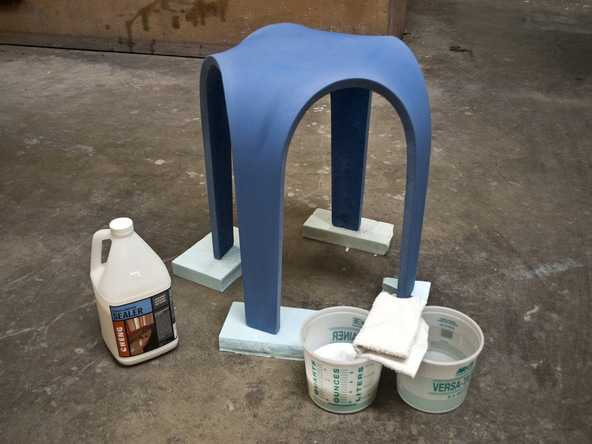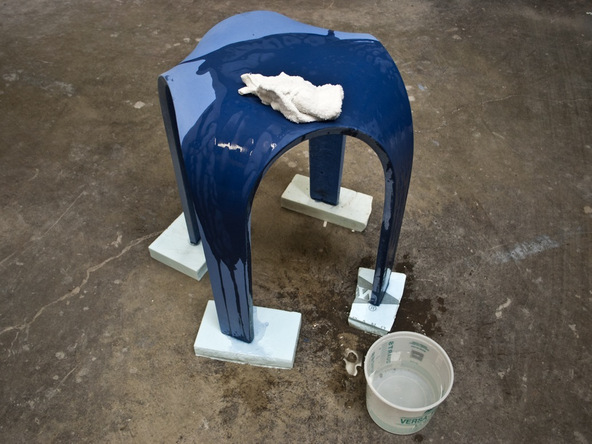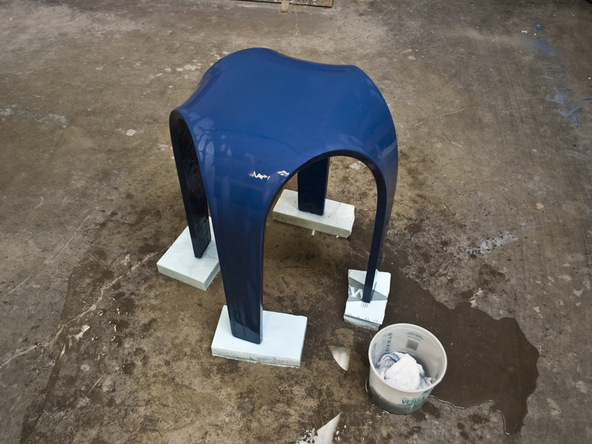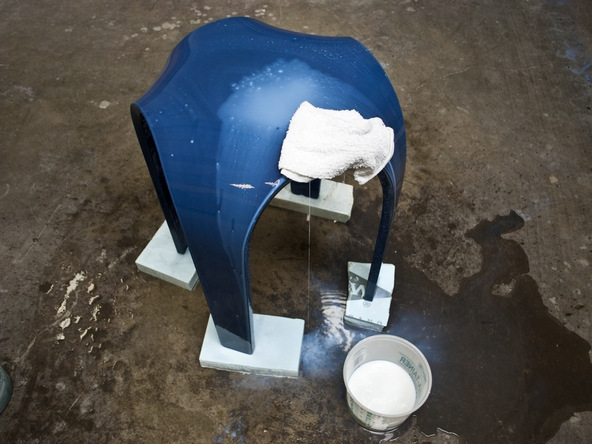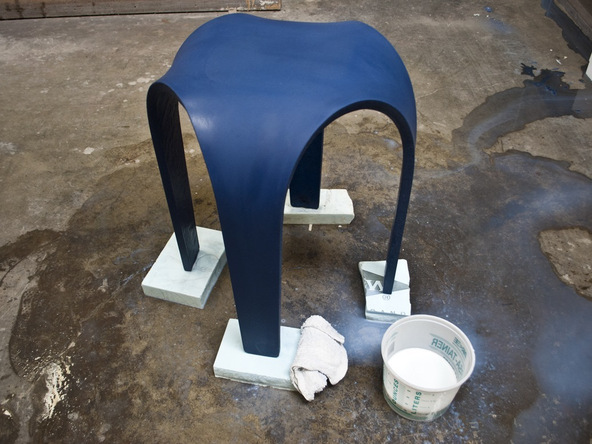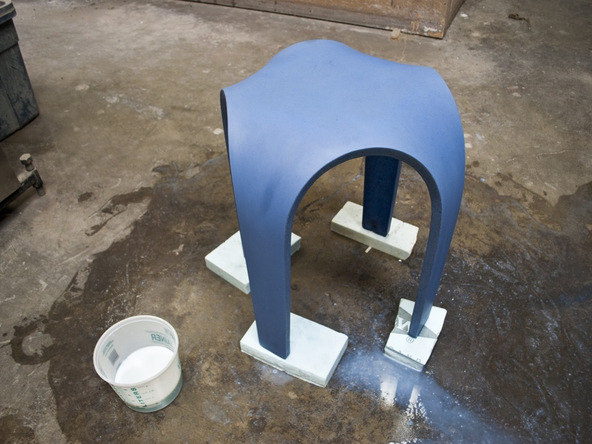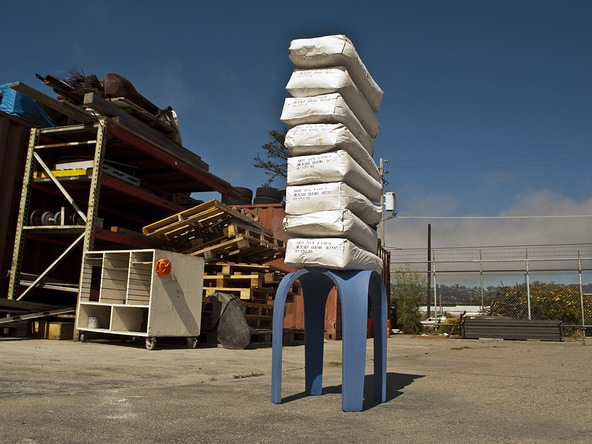Bent Concrete Side Table
SIX: SEALING CONCRETE
Our favorite sealer for projects shaped like this is the CHENG Concrete Sealer. The sealer allows us to slowly saturate the concrete with penetrating acrylic chemistry to insure the concrete is sealed from within. We can also avoid roller marks and brush streaks by using the “wash” application method.
What You’ll Need
- CHENG Concrete Sealer
- 100% Cotton Terry Towels
- Rubber Gloves
- Small Buckets
Step 1 – Saturate with Clean Water
Step 2 – Apply Sealer
Previous: Demolding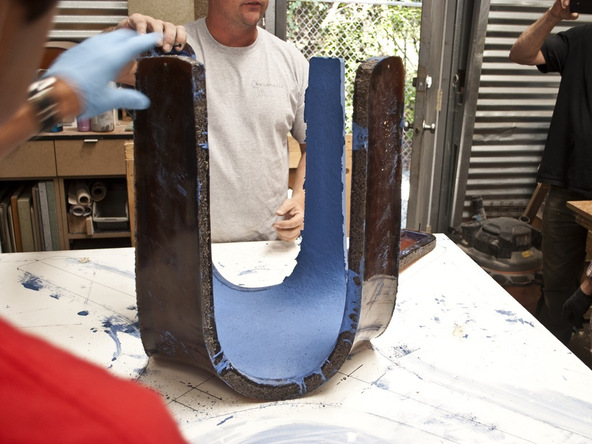

Wait 24 hours before attempting to demold this project. The legs will continue to be delicate until the concrete has reached full strength in seven days.

